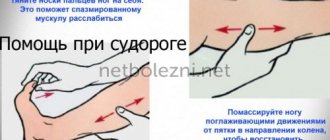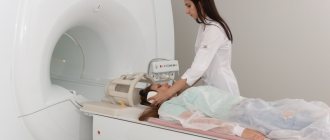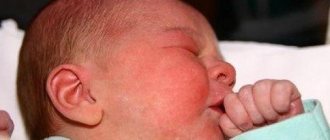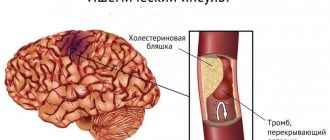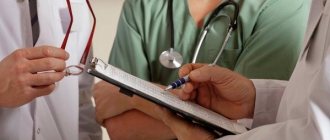Fainting (syncope) is a short-term loss of consciousness, during which muscle tone sharply decreases, then - after a minute or two - the person returns to consciousness without resuscitative measures.
There are different types of fainting, and the prognosis varies for each case. However, the essence of this condition is always that the brain does not receive enough blood, it stops working normally, and loss of consciousness occurs.
Three main types of fainting
1. Reflex (neurotransmitter) fainting occurs due to a malfunction of the nervous system and, as a consequence, vasodilation and a decrease in heart rate (bradycardia). Systemic blood pressure drops, and as a result, blood supply to the brain is disrupted. There are two types of reflex fainting:
- Vasovagal (neurocardiogenic) syncope occurs when the autonomic nervous system, which regulates blood pressure and heart rate, is disrupted. This is the most common type of fainting; it occurs especially often in athletes, young and generally healthy people. Vasovagal syncope usually occurs in a person who is standing or sitting. In this case, there is often a pre-fainting state: dizziness, lightheadedness, flush of heat, pallor, nausea, vomiting, abdominal pain, increased sweating. There is usually no cause for concern with vasovagal syncope. Such fainting can occur after a strong cough, sneezing, laughing, fright, severe pain, at the sight of blood, as well as while being in a crowded place, a hot room, in the sun, after physical exertion, urination, defecation, etc.
- Sinocarotid syncope, which occurs when pressure is placed on the carotid sinus (the dilated part of the common carotid artery). This can, for example, occur when the neck moves (in particular when a man shaves and turns his head), or if the shirt collar is too tight.
2. Fainting due to orthostatic hypotension. Orthostatic hypotension is a decrease in blood pressure during a change in position from horizontal to vertical, that is, at the moment when a person stands up. It can occur for a variety of reasons:
- from dehydration (including due to diabetes mellitus);
- with Parkinson's disease;
- after taking antiarrhythmic or antihypertensive drugs (especially in older people in the heat), antiemetics, antidepressants and antipsychotics;
- from drug and alcohol abuse;
- due to internal bleeding as a result of violation of the integrity of internal organs after injury or due to complications of various diseases;
- after standing for a long time, especially in crowded, stuffy places.
3. Cardiogenic syncope is associated with cardiac dysfunction. It can occur even when a person is lying down. Usually there are no warning signs - the person suddenly loses consciousness. This type of fainting indicates a serious threat to life and health. It occurs more often in people with a family history of unexplained sudden death or early cardiovascular disease. Fainting can be caused by:
- arrhythmia;
- ischemia (lack of blood supply) due to severe narrowing of the coronary vessels, as well as a tumor or blood clot that impairs the patency of a large vessel;
- structural changes (cardiac tamponade, aortic dissection, congenital anomaly of the coronary arteries, hypertrophic cardiomyopathy, etc.).
Sometimes fainting can be associated with hypoglycemia (too low blood glucose levels) due to diabetes, panic or anxiety disorder, etc.
A non-convulsive epileptic attack can also look like fainting, but it lasts longer than a regular faint, and after it the person does not immediately come to his senses. Also, during an attack, the patient may bite his tongue, and sometimes fecal or urinary incontinence occurs.
Loss of consciousness in some cases is caused by serious neurological disorders: stroke, transient ischemic attack, subclavian steal syndrome (deterioration of blood supply due to narrowing or blocking of the lumen of the subclavian artery), severe migraine.
Loss of consciousness after a traumatic brain injury also cannot be called fainting; in this situation, you must consult a doctor so that he can assess the severity of the damage.
In rare cases, loss of consciousness can be caused by narcolepsy, a condition in which a person experiences daytime sleep attacks and cataplexy (sudden relaxation of muscles).
How to prevent loss of consciousness?
If you have to stand for a long time in a stuffy room or in transport, tense and relax your muscles from time to time. This stimulates blood circulation.
If you feel a fainting state approaching, try to sit down and lower your head as low as possible - if possible, place it on your knees. Take a few deep breaths as you do this.
If you or your relative are prone to fainting, take preventive measures. You need regular physical exercise that reduces the level of excitability of the vestibular apparatus. If you have arterial hypotension, take restoratives and drugs that increase blood pressure.
When should you see a doctor if you faint?
If you faint, this is not always a reason to see a doctor. For example, if nothing like this has happened before, if this is the first fainting spell in several years, then most likely you do not have any life-threatening diseases. However, there are “red flags” for the person and for those who witness the fainting, indicating that they need to seek medical help:
- fainting lasts more than 2 minutes;
- fainting occurs frequently;
- You fainted for the first time after 40 years;
- You were injured while fainting;
- you have diabetes;
- You are pregnant;
- you have had or have heart disease;
- before fainting you felt chest pain or strong or irregular heartbeat;
- during fainting, urinary or fecal incontinence occurred;
- if you start to feel short of breath.
What will the doctor do?
The doctor must understand what is the cause of fainting and whether there is a threat to life and health. To do this, he will ask about the episode itself, about the medical history, about the illnesses of relatives (especially about early heart problems), conduct an examination and do an electrocardiogram. It is very important to tell your doctor everything you felt before and after you fainted, as additional symptoms can be very helpful in making a diagnosis. For example, chest pain in some cases indicates acute coronary syndrome (myocardial infarction or unstable angina) or pulmonary embolism. Rapid heartbeat is often a sign of arrhythmia. Shortness of breath may be a manifestation of heart failure or pulmonary embolism. Headache in some cases indicates vascular disorders and hemorrhages.
Often, the patient, among other things, has a stool test for occult blood (this checks for bleeding in the gastrointestinal tract), a blood test to determine whether there is anemia, and a blood test for brain natriuretic peptide (this can indicate problems with heart). The woman will most likely be given a pregnancy test. The doctor can see how much your blood pressure and pulse change when you change your body position.
If the doctor believes that it is likely that carotid syncope has occurred, carotid sinus massage will be required to confirm the diagnosis.
If subarachnoid hemorrhage is suspected, a CT scan of the brain and a lumbar puncture may be needed.
If the doctor suspects that the problem is epilepsy, he will prescribe an electroencephalography.
If you suspect heart problems, your doctor may admit you for observation in the hospital, send you for an ECG and echocardiography, perform Holter monitoring (24-hour ECG recording), electrophysiological study of the heart, or coronary angiography. In difficult cases, an implantable (subcutaneous) loop ECG recorder may be installed for several months.
A high risk of severe consequences is indicated by:
- ECG abnormalities;
- structural changes in the heart;
- symptoms indicating heart failure (shortness of breath, weakness, fatigue, swelling, etc.);
- low blood pressure (systolic - “upper” - below 90 mm Hg);
- shortness of breath before or after fainting, or at the time of treatment;
- blood hematocrit is less than 30%;
- old age and the presence of concomitant diseases;
- sudden deaths in the family due to heart problems.
Read also
Neuralgia
Neuralgia is a disease that is a lesion of the peripheral nerve.
It manifests itself as a strong, burning, acute pain that is felt in the area of innervation of the affected (along) nerve. Types… Read more
Pinched nerve
This morning you arrived at your country house. While taking out a heavy and large bag of tools from the trunk of your car, you suddenly felt a very strong, shooting pain in your lower back on the right side. Raise...
More details
Intracranial hypertension on MRI
Intracranial hypertension is an increase in intracranial pressure. Normal intracranial pressure is 15 mm Hg. When blood pressure doubles, a stroke occurs. At a pressure of 50 mm Hg, the patient can...
More details
Perinatal encephalopathy
Perinatal encephalopathy is a frequently encountered concept in the practice of pediatricians and pediatric neurologists! What it is? Literally, “perinatal encephalopathy” means “damage to the brain in the perinatal...
More details
Myelitis
Myelitis is a neurological pathology characterized by inflammation of the gray and white matter of the spinal cord, which leads to damage to myelin (the substance that forms the sheath of nerve fibers) and the axon (the process...
More details
Treatment after fainting
Whether you need any treatment after fainting depends on the cause.
In case of reflex fainting, provoking factors should be avoided, since no treatment is required in this case. If you faint while your blood is being drawn, tell the nurse so they can have you lie down on the couch before pricking your finger or giving the injection. If you don't understand what exactly causes fainting, but your doctor says there is no threat to your health, you can keep a diary to determine the triggering factors.
In case of anemia, it is necessary to find out its cause and correct it: the range of conditions leading to anemia is very wide - from an unbalanced diet to a tumor.
If you have low blood pressure, it is recommended to avoid dehydration, not to eat large meals, and to drink caffeinated drinks. To prevent the pressure from dropping sharply, after you get up, you can resort to special maneuvers: cross your legs, tense the muscles in the lower part of your body, clench your fists or tense your arm muscles.
If fainting is caused by taking any medications, the doctor will stop or replace the culprit drug, change the dose or time of administration.
Some heart conditions will require surgery, including installation of a cardioverter-defibrillator (a device that monitors the heart's rhythm). In other cases, conservative therapy, for example, antiarrhythmic drugs, helps.
Diagnostics
For the most part, fainting can go away on its own, but you still need to get diagnosed, since it can be some kind of serious illness and harm a person’s health. Sometimes the patient does not know why syncope occurs. In this case, the doctor prescribes an extensive examination.
The specialist will first find out from the patient what could have caused the fainting. Maybe it was menstruation or heavy workload, poisoning. The doctor must find out whether the patient took any medications, because there could be an overdose.
If a patient is hospitalized after fainting, the person may feel lethargic and have difficulty answering any questions. It is mandatory to donate blood; this will help determine glucose, hemoglobin and red blood cells.
They also diagnose internal organs using ultrasound, because the causes of fainting may be hidden in the improper functioning of the body. They prescribe an ECG, MRI, x-ray and several other methods that will help detect the problem. They may also be referred to an appointment with a cardiologist if pathologies are found in the cardiac system.
First aid for fainting
When you feel that you are about to faint (pre-fainting or, for example, causeless yawning), lie down so that your legs are higher. Or sit with your head between your knees. This will allow more blood to flow into the brain. If you do lose consciousness, after you come to your senses, do not get up immediately. It's better to give yourself 10-15 minutes to recover.
If a person begins to lose consciousness before your eyes, follow the same instructions: lay him down so that his legs are higher than his head, or sit him down and lower his head between his knees. It is also better to unfasten the collar and loosen the belt. If a person does not come to consciousness for a long time (more than 2 minutes), lay him on his side, monitor his breathing and pulse and call an ambulance. It is not recommended to use ammonia: firstly, it is unclear whether it brings a person to consciousness faster, and secondly, it can be dangerous in some diseases, for example, bronchial asthma.
